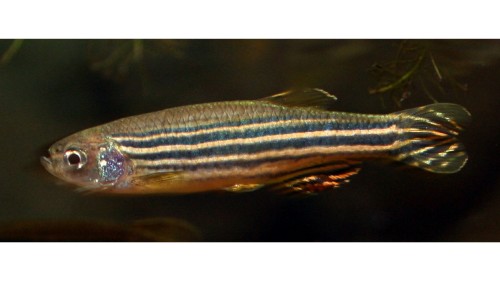Studying the biology of a little striped fish commonly found in freshwater aquariums all over may help scientists learn more about gene editing and disease models — but to do that, researchers much develop protocols for growing the zebrafish cells they need.
And all those processes need to be doable in a teaching lab, with relatively basic equipment and reagents.
That’s the goal behind the upcoming Centennial Scholars Lecture, “Culturing Neurons and Oligodendrocytes from Zebrafish Brain,” set to start at 4 p.m. Tuesday, Sept. 30, in room 260 of the Integrated Science Center.
“Once cells are growing in culture, we can stain them and use our fluorescence microscope to take images that allow students to determine which type of cells are present in their cultures,” said Dr. Krys Strand, associate professor of biology at Concordia. “This project both develops a way for students to learn important techniques that they can build on in the future, and it allows us to grow cells that can be used in future applications, such as gene editing or investigating disease models.”
A number of students have been involved in various stages of the project, mentored by Strand and collaborator Harshana De Silva Feelixge, including Cayley Borrud, Annika Griffith, Riham Jameel, Anusheh Shreonty, Ashtyn Morris, and Setiya Hamidi.
“Having the opportunity to collaborate with Harshana and our talented team of students as we develop skills toward bringing exciting new labs into the classroom is one of the most fun and rewarding aspects of being a faculty member at Concordia,” Strand said.
Students were involved in every aspect of the project. They read scientific literature, developed and tested protocols, imaged cells and planned future work. They’ve also been able to develop technical skills related to cell culture and imaging, as well as gaining experience in troubleshooting, coordinating with one another, following protocols, and working with precision, Strand said.
“Because we are focused on developing accessible protocols, our results will contribute to the learning of future Cobbers, and hopefully many students at other institutions as well,” Strand said. “This work will also provide a foundation on which we can build as we look to expand research opportunities for students, especially focused on disease models and current techniques such as (the gene-editing tool) CRISPR.”
As such, the project will likely be of most interest to undergraduate students studying life sciences and biochemistry.
“Research is an important form of high-impact learning for all students that helps them develop technical skills as well as many transferable skills such as troubleshooting, collaboration, perseverance, and creativity,” Strand said. “Bringing this type of research into the classroom affords more students research experience. By sharing our work with the larger scientific community, we can contribute methods and protocols that can be adopted into many more classrooms and research settings.”
